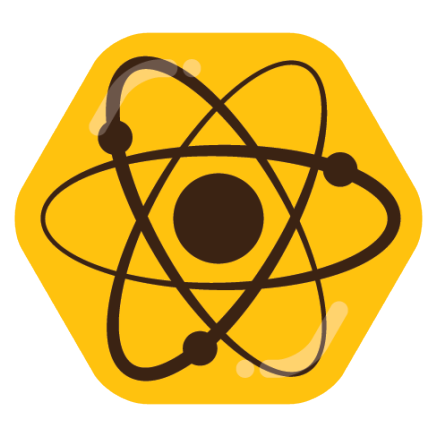Ubuntu 16.04, dual booted on my laptop before I knew how much of a hassle that could be! Fortunately, never had any of the infamous issues.
- 2 Posts
- 350 Comments

 3·7 days ago
3·7 days agoBeing landed gentry must have helped in getting your hands on one!
Couldn’t find any near me at less than $200 over MSRP :(

 3·7 days ago
3·7 days agoA new iteration of open-source drivers for NVIDIA cards which aims to work better and be more feature-complete. Original announcement post here which explains a bit better.

 32·9 days ago
32·9 days agoThere are currently 252 Catholic cardinals, but only 135 are eligible to cast ballots as those over the age of 80 can take part in debate but cannot vote.
You’re telling me the Catholic church has more term limits than the US Supreme Court?
Will do! I didn’t make this clear, I did think labplot was a great software for folks who don’t already have the skillset to make plots directly in python – which is the majority of people, and probably the target audience.
Keep up the good work!
Mi was trying out labplot yesterday, and as far as I can tell it can only really plot, not do any sort of transformation or data analysis. The plotting UI itself is pretty nice and the plots look good, but for most of my use cases its worth it to just spin up a Jupyter notebook and work with MatPlotLib directly.
If it could become a general-purpose UI for matplotlib, thatd be fantastic, but its pretty limited in actual usability for me at the moment.

 2·15 days ago
2·15 days agoMaybe the graph mode of logseq?
This gives strong “Lovecraft describing things he doesn’t understand as noneuclidian” vibes.
🎶 Saturday night and we in the spot, don’t believe me just watch 🎶
Chuck mangione soothes my soul
WELL ACKSHUALLY its a clay tablet, you just press into it with a little stick, then its fired…
Gotta love the low-quality-copper memes
While I agree that publishers charging high open access fees is a bad practice, the ACS journals aren’t the kind of bottom-of-the-barrel predatory journals you’re describing. ACS nano in particular is a well respected journal for nanochem, with a generally well-respected editorial board, and any suspicions of editorial misconduct of the type you’re describing would be a three-alarm fire in the community.
I will also note that this article is labelled “free to read” – when the authors have paid an (as you said, exhorbitant) publishing fee to have the paper be open access, the label used by ACS journals is “open access”. The “free to read” label would be an editorial decision, typically because the article is relevant outside the typical readerbase of the journal, and so it makes sense both from a practical perspective (and more cynically for the journal’s PR) to make it available to everyone, not just the community who has institutional access.
Also, the fact that the authors had a little fun with the title doesn’t mean its low-effort slop – this was actually an important critique at the time, because for years people had been adding different modifications to graphene and making a huge deal about how revolutionary their new magic material was.
The point this paper was trying to make is that finding modifications to graphene which make it better for electrocatalysis is not some revolutionary thing, because almost any modification works. It was actually a useful recalibration for expectations, as well as a good laugh.
Edit: typo

 11·1 month ago
11·1 month agoNot somebody who knows a lot about this stuff, as I’m a bit of an AI Luddite, but I know just enough to answer this!
“Tokens” are essentially just a unit of work – instead of interacting directly with the user’s input, the model first “tokenizes” the user’s input, simplifying it down into a unit which the actual ML model can process more efficiently. The model then spits out a token or series of tokens as a response, which are then expanded back into text or whatever the output of the model is.
I think tokens are used because most models use them, and use them in a similar way, so they’re the lowest-level common unit of work where you can compare across devices and models.

 3·1 month ago
3·1 month agoHmmmm milk is slightly acidic, and concrete will dissolve if the pH is lowered from its normal high alkalinity, so given a large enough volume of milk…I suppose milk would dissolve concrete substantially faster than water would.

 2·1 month ago
2·1 month agoThere’s going to be a temperature range somewhere between “fridge” and “corona of the sun” where that milk is the foulest-smelling thing in the universe.

 6·1 month ago
6·1 month agoI think its because while its under water it doesn’t have a chance to diffuse into a larger volume of air – normally farts are pretty dilute by the time it makes it to anyone’s nose.
My favorite overheard undergrad story:
I was walking past the lecture hall right after an organic chemistry midterm, and there was a cluster of 4-5 students talking about the exam. One asked about question 8b, and another one said “you’re not supposed to mix nitric acid and ethanol, that makes TNT, right?” I had to stifle a chuckle as I walked by.
So close, and yet so far! Nitrated acetone is explosive, and TNT (trinitrotoluene) is also made with nitric acid, but toluene is a much more complex molecule than acetone. If those undergrads could figure out how to turn acetone into TNT efficiently, they’d get a Nobel!

 1·1 month ago
1·1 month agoAgreed! I’m just not sure TOPS is the right metric for a CPU, due to how different the CPU data pipeline is than a GPU. Bubbly/clear instruction streams are one thing, but the majority type of instruction in a calculation also effects how many instructions can be run on each clock cycle pretty significantly, whereas in matrix-optimized silicon its a lot more fair to generalize over a bulk workload.
Generally, I think its fundamentally challenging to generate a generally applicable single number to represent CPU performance across different workloads.

 4·1 month ago
4·1 month agoEhh, its not actually a big jump, and its oversold here. It’s useful as an alternative to hand-designing genes, but its just a summarization tool for the gene sequences we’ve already annotated – and a ballpark of 10-20% of those annotations are wrong, as it’s actually very hard to annotate genes’ functions correctly. I would be wary of trusting that this will work outside the most-studied protein families.



“Meat’s back on the menu, boys” hits different in this timeline…
(Yes, I know that Taking the Chickens to Isengard is noncanonical in other ways…)